
views
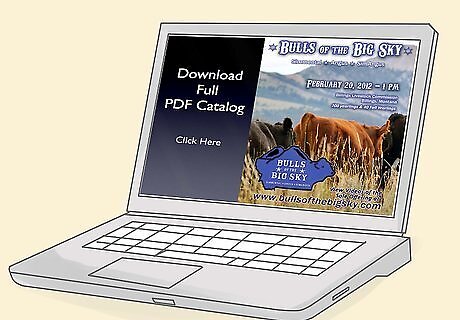
Get a breeder or bull sale catalogue, or even a catalogue from an AI company. You can find these on the internet or by contacting various breed-specific organizations to get a hard-copy of some bulls and females to look over. Local seedstock breeders that are having a bull sale in the near future and bull testing stations where bulls are being held are both good sources to get a catalogue from on the bulls and heifers that are being made ready to sell. Various AI companies like Genex and Semex are also a great source to go by to analyze the various EPD values for various bulls that have semen available to be used. Much of the information on the bulls they have available can be obtained on-line or by ordering a catalogue.
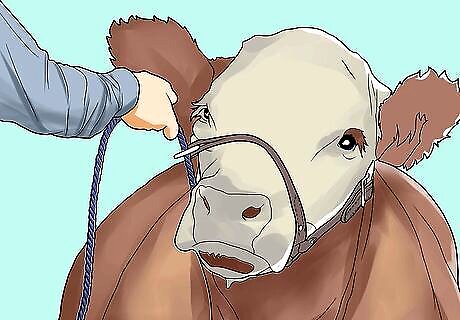
Find a particular bull, cow or heifer that catches your eye. It doesn't matter what bovine you choose: it can be the first one on the page. But you will be needing to look at the EPD numbers that pertain to that animal to follow the rest of the steps below.
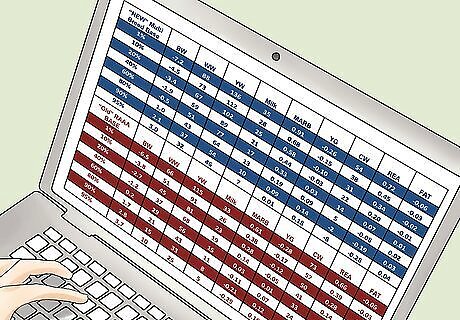
Start by looking at the abbreviations found in the EPD chart. There are two types of abbreviations found in most EPD charts: The production traits, and the accuracy values. Accuracy values are either as percentage values or positive/negative values, and come in the form of the abbreviation ACC. Production traits are the actual EPDs that are analyzed in the selection of a herd bull, cow or heifer. Some of the more common traits, their abbreviations and meanings (with emphasis placed on bulls as sires) that are commonly reported on most EPD tables are as follows: BW (Birth Weight): Birth weight of a sire's progeny when compared to the breed average, in pounds (lbs). WW (Weaning Weight): Adjusted to 205 days excluding maternal effects (evaluated as milk), in pounds (lbs). YW (Yearling Weight): Adjusted to 365 days excluding maternal effects in pounds (lbs). Milk, MM (Maternal milk): A measure of the pre-weaning performance, pounds of calf attributed to the milking ability of a sire's daughters. (Note the use of the term "milk" is inaccurate because the trait measures all maternal effects, of which milk is the major but not the only factor.) CE (Calving Ease): The ease with which a sire's calves are born. This is expressed in a percent of unassisted births, with the larger positive numbers indicating greater calving ease. This EPD is determined largely by the weight of the calf. (Trait expressed in Gelbvieh and Simmental breed associations.) CED (Calving Ease Direct): Predicts calving ease of a sire when mated to heifers. Expressed as difference in percentage of unassisted births, with a higher value indicating increased calving ease in first-calf heifers. (Trait reported in Angus, Charolais, Gelbvieh, Hereford, Limousin and Red Angus breed associations.) CM (Calving Ease Maternal): Predicts the total maternal calving ease of a sire's daughters. This 1/2 the direct EPD plus the pure maternal EPD. CW (Carcass Weight): The adjusted carcass weight of a sire's progeny expressed in pounds (lbs). (Trait used in Angus, Brahman, Brangus, Charolais, Gelbvieh, Hereford, Limousin, Red Angus, Simbrah and Simmental breed associations.) DOC (Docility): This is the measure of an animal's temperament, nervousness and flightiness when handled. (Trait primarily reported in Limousin breed associations, but may also be found in Angus, Salers, Charolais and Maine Anjou breed associations.) Fat (Fat Thickness): This trait is the back fat thickness measured over the ribeye at or between the 12th and 13th ribs. It is used as a predictor of total body fat being the major factor in calculating yield grade. (Trait reported in Angus, Brahman, Brangus, Charolais, Gelbvieh, Red Angus, Simbrah and Simmental breed associations.) IMF (Intramuscular Fat): This reflects differences in a 365 day adjustment of intramuscular fat measured over the 12th and 13th rib in live cattle using ultrasound. (Trait reported in Angus, Charolais [included in marbling EPD] Limousin and Hereford breed associations.) MARB/Marb, MB (Marbling): This is a 365-day adjusted marbling score measured in USDA marbling degrees. This is the primary factor in USDA quality grades. This trait would also be measured the marbling degrees for breeds with this EPD found in other countries besides the USA, such as Canada, Australia, and South Africa. (Trait reported in majority of beef breeds including the Angus, Brahman, Brangus, Charolais, Gelbvieh, Limousin, Red Angus, Simbrah and Simmental breed associations.) M&G, TM, MWW (Milk and Growth/Maternal Milk and Growth, Total Maternal, Maternal Weaning Weight): This is a measure of a sire's ability to pass on milk production and growth rate through his daughters. It predicts the total weaning (direct and maternal) that will be displayed in his daughters' offspring. It is calculated by adding half of the Weaning Weight EPD with the Milk EPD ([1/2 WW EPD] + MWW EPD). This trait can be calculated for all breeds participating in the National Cattle Evaluation analysis. REA, RE (Ribeye Area): Ribeye area measured in square inches between the 12th and 13th rib and adjusted to 365 days. This is a good predictor of the total amount of muscle in the carcass and is highly related to carcass weight. (Trait reported in Angus, Brahman, Brangus, Charolais, Gelbvieh, Limousin, Red Angus, Simbrah and Simmental breed associations.) SC, SCR (Scrotal Circumference): This is the predictor of sperm-producing tissue as measured in centimeters. Scrotal circumference is highly related to age at puberty in male and female progeny. (Trait reported in Angus, Brangus, Beefmaster, Charolais, Gelbvieh, Hereford and Limousin breed associations.) Note that not all of the traits used in various breed associations like the American Angus Association and American Hereford Association, among many others, have been mentioned. It is suggested that you check out the breed association website applicable to your country (especially if you reside outside of the USA) for additional EPDs and their definitions. For information on additional Angus EPD definitions including $Value EPDs, please check out the AAA's EPD Definitions website. For Hereford EPD definitions, please see the EPD Basics page on the AHA website at http://www.hereford.org/content/epd-basics.
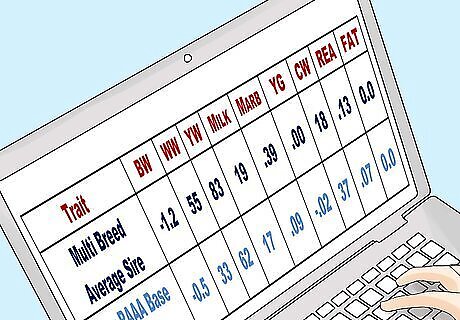
Analyze the numbers that go with the abbreviations mentioned above. Depending on the traits themselves, there is always going to be some sort of concern if numbers go into extremes or are significantly separate from the average-breed-EPD values. There would be cause for concern if, for example, a bull has a high BW EPD, or a negative SC EPD. Remember that there are both numbers showing you the accuracy of the EPD values and the EPD values for the production traits themselves. The majority of the numbers don't go over 100 or below -10, and the accuracy range is from 0.0 to 1.0, or on a percentage-basis. Accuracy values are published with an EPD to indicate the amount of risk that an individual will take when using an animal in a breeding program. It is a reflection of the number and distribution of progeny per sire along with how much pedigree information is available. This accuracy gives us an indication of how close estimates are to an animal's true genetic value and is an extremely useful tool to breeders in determining the reliability of an EPD. The higher the accuracy value, the less risk there is to an EPD value changing as additional data is included. That being said, bulls with low accuracies should be used on a limited basis, while bulls with high accuracies can be used as deemed necessary.

Know and become familiar with the current averages for a breed. All EPDS are reported relative to a base population, making each breed's base year arbitrary. Most bases are obtained by forcing the EPDs for all animals in a particular year to add to zero. Thus, the EPDs reported on animals born in the current year are relative to the average genetic merit of the animals born in the base year. Note that an animal with a 0.0 EPD does not necessarily mean that they are at the current breed average for that EPD value. For example, an Angus born in 2006 with a birth weight EPD of +2.3 would be the average for BW EPD of the Angus breed, while a bull with a 0.0 EPD would be below the current average.
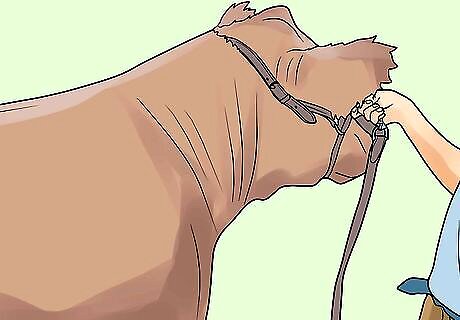
Put the context of EPD values into your purchase of a new bull. The majority of bulls these days have some form of EPD values put on them, so you will need to study the values and accuracies and base your decisions on the right bull for you for your herd. Don't just choose any bull. You will need to first analyze your cow herd and see where the weaknesses are. Wherever you find weaknesses you will need to try to find as strengths in your potentially new bull. In either extremes, a bull is selected to either improve daughters for replacements, or maximize growth so that the whole calf-crop is sold as weaning as feeder calves. You cannot have both: in other words, you can't have your pie and eat it too! The same can be applied to the purchase of new heifers or cows. You need to select females that will potentially help improve the herd, even if it's a bit less than what a new bull can do.


















Comments
0 comment